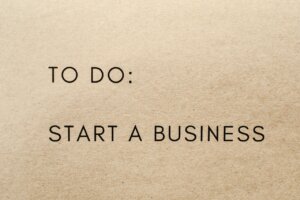Ultimately, success in business depends on finding your competitive advantage, which is to say that which makes you superior to your competitors and is perceived as valuable by your customers. One approach for figuring that out is through value chain analysis, as developed by Michael Porter. The value chain is a sequence of activities that exist in almost every business.
Profit is determined by performing these activities efficiently and/or with suitable quality results such that customers are willing to pay more for the resulting product than it cost you to carry out these activities. And customers will buy from you rather than your competitors if you can tweak the value chain to lower costs or achieve superior differentiation. Value chain activities include:
- Inbound Logistics: Ordering, receiving, warehousing inputs (such as raw materials), then distributing them to operations as needed
- Operations: Transforming inputs into finished products and services
- Outbound Logistics: Warehousing/distribution of finished goods
- Marketing & Sales: identification of customer wants/needs, creation of sales
- Service: Customer support after the goods are sold
Support to these activities are provided by:
- Firm infrastructure: Structure, leadership, control systems, and company culture
- HR Management: Recruiting, hiring, training, compensation
- Technology to support value-creating activities
- Procurement: purchasing inputs such as materials, supplies, equipment
Achieving a Cost Advantage
Once you’re clearly defined your value chain for your proposed venture, then the next step is to perform a thorough cost analysis by assigning costs to each value chain activity. Porter mentioned 10 cost drivers where you might gain a cost advantage by controlling these drivers better your competitors.
- Economies of Scale
- Learning
- Capacity utilization
- Linkages between activities
- Interrelationships between business units
- Degree of vertical integration
- Timing of market entry
- Firms policy of cost or differentiation
- Geographic location
- Institutional factors (regulation, unions, taxes, etc)
Differentiation
Another way you can gain competitive advantage is through differentiation, which can occur anywhere in the value chain. Differentiation comes from providing unique value at some point in the value chain which lowers costs or improves the quality of the final product. Here’s Porter’s drivers of uniqueness:
- Policies and decisions
- Linkages among activities
- Timing
- Location
- Interrelationships
- Learning
- Integration
- Scale
- Institutional factors
Finally, your company’s value chain links to the value chains of suppliers and buyers in a larger stream of activities that Porter calls the value system. Development of your competitive advantage will depend not only on your value chain, but also on the value system within which you will operate. Good luck!
– – – – – –
For more resources, see our Library topic Business Planning.
- Copyright © 2011 Rolfe Larson Associates – 15th Anniversary!
- Author Venture Forth! Endorsed by Paul Newman of Newman’s Own
- Read my weekly blogs on Social Enterprise and Business Planning
 Sections of this topic
Sections of this topic















